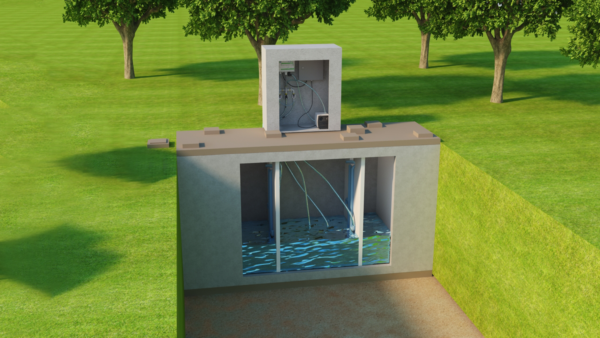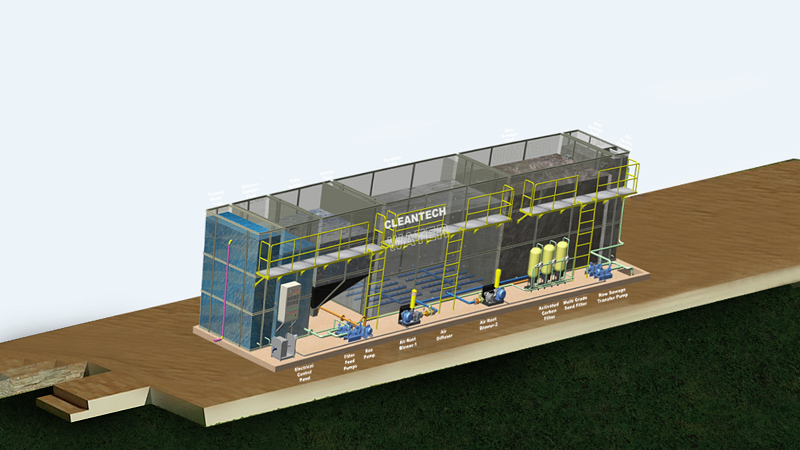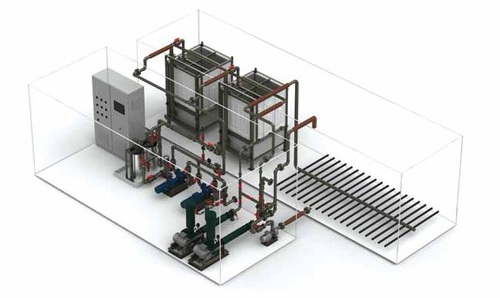Liquid and solid wastes are produced by every community. Here, we would discuss the liquid portion that is wastewater. It is the water supply that gets contaminated after being used by different users. These users, or the so-called source of wastewater, could be institutes, industries, residential areas, commercial establishments, etc.
Untreated wastewater should not accumulate in any way. It consists of decomposed organic matters. If kept for a while, these materials can produce huge amount of foul-smelling gases that can be toxic to the environment. Besides this, it also contains other toxic compounds that can be harmful if exposed to the environment for long. Therefore, it is important to remove wastewater from its source and clean it. Moreover, due to the scarcity of water, reuse is an excellent option.
There are different types of sewage treatment plants in India. The major difference in them is the process they use to treat wastewater.
- Rotating Disc System
- Activated Sludge Plant (ASP)
- Suspended Media Filters (SMF)
- Submerged Aerated Filter (SAF)
- Non-Electric Filter
- Trickling Filter
- Sequencing Batch Reactor (SBR)
- Moving Bed Biofilm Reactor (MBBR)
- Membrane Bioreactor (MBR)
Here, we will discuss the last three wastewater treatment plants being the most commonly used in India.
SBR Sewage Treatment Plant

Sequencing Batch Reactors (SBR) is a type of wastewater treatment method that uses the activated sludge process. The tanks help pass oxygen through wastewater and activated sludge. This decreases the organic materials present in water. The treated effluent is reasonably good for land or surface water. The aeration time depends on the amount of water that needs to be treated and the size of the plant.
One or more tanks are used in the process. They have a ‘flow-through’ system where wastewater enters from one end and treated effluent exits from the other. There are five stages in the SBR process that help treat water and make it reusable.
The SBR process helps remove nitrogen, phosphorus, and other microorganisms present in wastewater.
Benefits of SBR Sewage Treatment Plants
- Flexibility in operation and control
- High treatment efficiencies
- Various stages can be achieved in one single reactor vessel – such as primary & secondary classifications, equalization, and biological treatment
- Minimal footprint
- Produce electric energy from biogas
- Compact tank reduces the required space
- Eliminates the use of clarifiers and other equipment
- Cost-effective
MBBR Sewage Treatment Plant

The Moving Bed Biofilm Reactor (MBBR) wastewater treatment process was first invented in the late 1980s.
The MBBR process has an aeration tank with plastic transporters filled with wastewater. This gives way to the growth of biofilm. The density of these carriers and water is the same. Usually, activated sludge systems require recycling of the sludge, which is not the case in the MBBR process.
It is considered to be a better option as compared to other conventional methods.
Benefits of MBBR Sewage Treatment Plant
- Complete solid removal
- Smaller units require less space
- Increased process stability
- Increased treatment volume
- Periodic backwashing is not required
- Sludge production is decreased
- Improved settling characteristics
- Convenient to use
- Reliable and efficient
- Cost-effective
MBR Sewage Treatment Plant

Membrane Bioreactor (MBR) is a combination of membrane processes. Ultrafiltration (UF) or microfiltration (MF) process is combined with the activated sludge process, a biological wastewater treatment method. MBR sewage treatment process is mostly used for municipal industrial wastewater treatments.
An MBR system consists of 10-11 sub-systems along with membrane zone and fine screening headworks. The basic function of the membranes is to separate organic matters from water. This is usually accomplished with the help of clarifiers and filters used in activated sludge facilities. The membrane zone is the first step that weakens the contaminants. Further, a series of membrane elements are used to filter these contaminants.
Benefits of MBR Sewage Treatment Plants
- Produces high-quality effluent
- Small foot-print
- Easy retrofit
- An upgrade of old wastewater treatment plants
- Better biotreatment
- Sludge removal cost is low
- No sand filtration used
- Easy to operate
With time, MBR has become an established process for wastewater treatment due to the advanced and innovative technology it uses and the cost of membrane which has reduced drastically. Today, MBR is one of the most considered sewage treatment plants in India.
Sewage treatment plants in India have immensely gained popularity. The importance of pollution control and saving water is relatively understood well. Today, we have multiple means and ways to address these issues. Water treatment processes not only help reuse water but also keep the environment clean and healthy.
At Cleantech Water, we have advanced technology and dedicated personnel. For more information about our sewage treatment plants in India, feel free to call us at +91-9099915539 or +91-9558996411. We’ll be happy to assist you.
Also Read:
What are the Uses of Small Sewage Treatment Plants
How are SBR, MBR and MBBR Sewage Treatment Plants Different?

